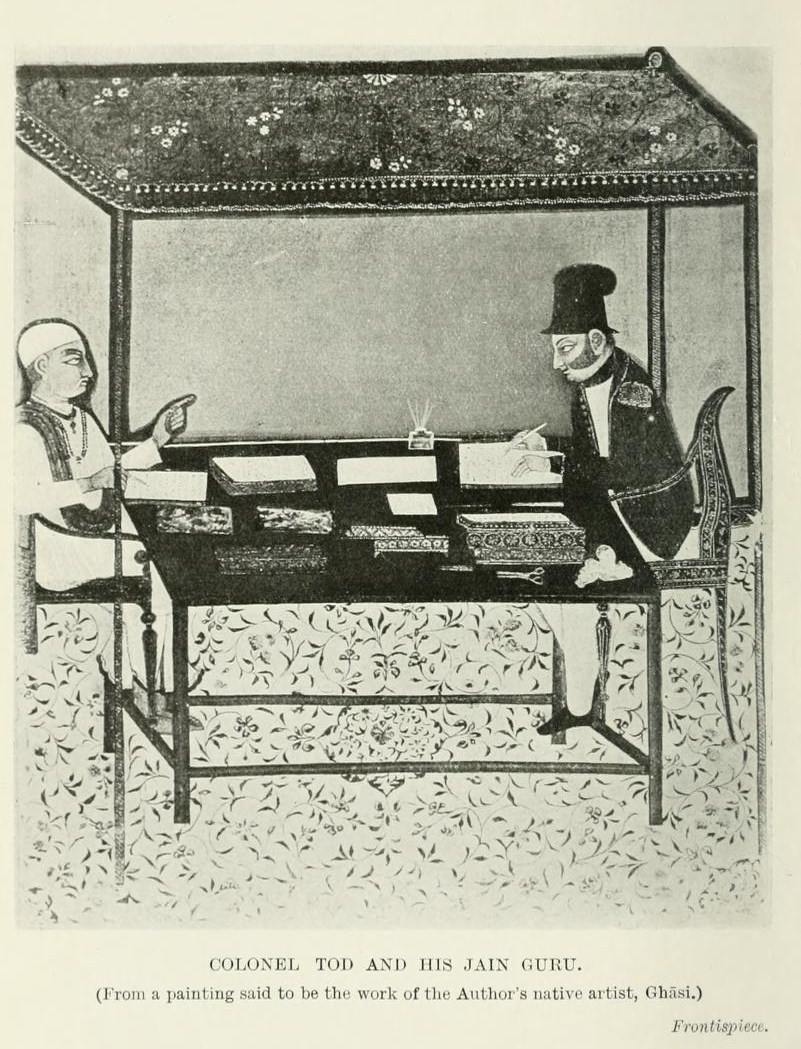|
Titti (bagpipe)
The titti ( te, titti, masaka titti, or tutti) is a type of bagpipe played in Andhra Pradesh, India, made from an entire goat-skin.Subhash Kak (Louisiana State University). The Indian Epic Song Tradition'. Presented at The 7th International Conference and Festival of Asian Music, Busan, Korea, Sept 26-Sept 30, 2002. The instrument is described as a goatskin with a double-reed inserted into one leg, and a bamboo blowpipe into the other. The term ''tittii'' is used in Telugu, Kannada, and Malayalam. History Several paintings possibly depicting bagpipes are shown in Kerala, from the early eighteenth century. Colonel James Tod (1782–1835 CE) notes that the Yanadis, a forest tribe in Madras Chennai (, ), formerly known as Madras (List of renamed Indian cities and states#Tamil Nadu, the official name until 1996), is the capital city of Tamil Nadu, the southernmost states and territories of India, Indian state. The largest city ..., also play the bagpipes,as do later so ... [...More Info...] [...Related Items...] OR: [Wikipedia] [Google] [Baidu] |
Bagpipe
Bagpipes are a woodwind instrument using enclosed reeds fed from a constant reservoir of air in the form of a bag. The Great Highland bagpipes are well known, but people have played bagpipes for centuries throughout large parts of Europe, Northern Africa, Western Asia, around the Persian Gulf and northern parts of South Asia. The term ''bagpipe'' is equally correct in the singular or the plural, though pipers usually refer to the bagpipes as "the pipes", "a set of pipes" or "a stand of pipes". Construction A set of bagpipes minimally consists of an air supply, a bag, a chanter, and usually at least one drone. Many bagpipes have more than one drone (and, sometimes, more than one chanter) in various combinations, held in place in stocks—sockets that fasten the various pipes to the bag. Air supply The most common method of supplying air to the bag is through blowing into a blowpipe or blowstick. In some pipes the player must cover the tip of the blowpipe with their ... [...More Info...] [...Related Items...] OR: [Wikipedia] [Google] [Baidu] |
Andhra Pradesh
Andhra Pradesh (, abbr. AP) is a state in the south-eastern coastal region of India. It is the seventh-largest state by area covering an area of and tenth-most populous state with 49,386,799 inhabitants. It is bordered by Telangana to the north-west, Chhattisgarh to the north, Odisha to the north-east, Tamil Nadu to the south, Karnataka to the west and the Bay of Bengal to the east. It has the second longest coastline in India after Gujarat, of about . Andhra State was the first state to be formed on a linguistic basis in India on 1 October 1953. On 1 November 1956, Andhra State was merged with the Telugu-speaking areas (ten districts) of the Hyderabad State to form United Andhra Pradesh. ln 2014 these merged areas of Hyderabad State are bifurcated from United Andhra Pradesh to form new state Telangana . Present form of Andhra similar to Andhra state.but some mandalas like Bhadrachalam still with Telangana. Visakhapatnam, Guntur, Kurnool is People Capital ... [...More Info...] [...Related Items...] OR: [Wikipedia] [Google] [Baidu] |
James Tod
Lieutenant-Colonel James Tod (20 March 1782 – 18 November 1835) was an officer of the British East India Company and an Oriental scholar. He combined his official role and his amateur interests to create a series of works about the history and geography of India, and in particular the area then known as Rajputana that corresponds to the present day state of Rajasthan, and which Tod referred to as ''Rajast'han''. Tod was born in London and educated in Scotland. He joined the East India Company as a military officer and travelled to India in 1799 as a cadet in the Bengal Army. He rose quickly in rank, eventually becoming captain of an escort for an envoy in a Sindian royal court. After the Third Anglo-Maratha War, during which Tod was involved in the intelligence department, he was appointed Political Agent for some areas of Rajputana. His task was to help unify the region under the control of the East India Company. During this period Tod conducted most of the research ... [...More Info...] [...Related Items...] OR: [Wikipedia] [Google] [Baidu] |
Madras
Chennai (, ), formerly known as Madras (List of renamed Indian cities and states#Tamil Nadu, the official name until 1996), is the capital city of Tamil Nadu, the southernmost states and territories of India, Indian state. The largest city of the state in area and population, Chennai is located on the Coromandel Coast of the Bay of Bengal. According to the 2011 Indian census, Chennai is the List of most populous cities in India, sixth-most populous city in the country and forms the List of million-plus urban agglomerations in India, fourth-most populous urban agglomeration. The Greater Chennai Corporation is the civic body responsible for the city; it is the oldest city corporation of India, established in 1688—the second oldest in the world after London. The city of Chennai is coterminous with Chennai district, which together with the adjoining suburbs constitutes the Chennai Metropolitan Area, the List of urban areas by population, 36th-largest urban area in the world by ... [...More Info...] [...Related Items...] OR: [Wikipedia] [Google] [Baidu] |
Mashak
The mashak (also known as , , , ', ', ', ', '', )'' is a type of bagpipe found in Northern India, Uttarakhand, Sudurpaschim Province (especially Baitadi and Darchula district) of Nepal and parts of Pakistan and Afghanistan. The pipe was associated with weddings and festive occasions. In India it is historically found in Garhwal (kumaon) in Uttarakhand, Rajasthan and Uttar Pradesh. This bagpipe uses single reeds, and can be played either as a drone or as a melody instrument. Etymology The etymology of the term ''mashak'' stems from its common use in India, referring to a skin bag used for carrying water. This skin bag shares a similar function to the air bag of the bag pipes. Relation with the Scottish Highland pipes Some academics dispute any indigenous origins of the mashak; researcher Ander Burton Alter wrote in 2000 that the pipes today played in Kumaon are Scottish Highland bagpipes with one bass and two tenor drones, with no local manufacturer or evidence of existence prior ... [...More Info...] [...Related Items...] OR: [Wikipedia] [Google] [Baidu] |
Sruti Upanga
The sruti upanga ("drone bagpipe", or bhazana-śruti,Payer, Alois (1944 - ). '. (Materialien zur karnatischen Musik). Fassung vom 2009-05-20. druthi, or nosbug) is a type of bagpipe played in Tamil Nadu, southern India. The instrument was often used to supply a drone to accompany '' mukha vina'' (Tamil oboe) music. The instrument was described by Charles Russel Day (1860-1900): Playing method Beatrice Edgerly notes in 1942, similar to Day, that the pitch of the instrument was controlled by inserting wire or bits of silk. See also * Mashak, a Northern Indian bagpipe *Titti (bagpipe) The titti ( te, titti, masaka titti, or tutti) is a type of bagpipe played in Andhra Pradesh, India, made from an entire goat-skin.Subhash Kak (Louisiana State University). The Indian Epic Song Tradition'. Presented at The 7th International Conf ..., a bagpipe in Andhra Pradesh and Kerala References {{reflist External linksOnline Shruti BoxFree Online Shruti box. Bagpipes Indian musical ins ... [...More Info...] [...Related Items...] OR: [Wikipedia] [Google] [Baidu] |
Bagpipes
Bagpipes are a woodwind instrument using enclosed reeds fed from a constant reservoir of air in the form of a bag. The Great Highland bagpipes are well known, but people have played bagpipes for centuries throughout large parts of Europe, Northern Africa, Western Asia, around the Persian Gulf and northern parts of South Asia. The term ''bagpipe'' is equally correct in the singular or the plural, though pipers usually refer to the bagpipes as "the pipes", "a set of pipes" or "a stand of pipes". Construction A set of bagpipes minimally consists of an air supply, a bag, a chanter, and usually at least one drone. Many bagpipes have more than one drone (and, sometimes, more than one chanter) in various combinations, held in place in stocks—sockets that fasten the various pipes to the bag. Air supply The most common method of supplying air to the bag is through blowing into a blowpipe or blowstick. In some pipes the player must cover the tip of the blowpipe with th ... [...More Info...] [...Related Items...] OR: [Wikipedia] [Google] [Baidu] |
Indian Musical Instruments
Indian musical instruments can be broadly classified according to the Hornbostel–Sachs system into four categories: chordophones (string instruments), aerophones (wind instruments), membranophones (drums) and idiophones (non-drum percussion instruments). Chordophones Plucked strings Bowed strings * Chikara * Dhantara * Dilruba * Ektara violin * Esraj * Kamaicha * Kingri (string instrument) * Mayuri Vina or Taus * Onavillu * Behala (violin type) * Pena (musical instrument) * Pinaka vina * Pulluvan Veena - one stringed violin * Ravanahatha * Sarangi * Classical Sarangi * Sarinda * Tar Shehnai * Villu Paatu - arched bow instrument + Behala - Bengal Murshidabad Violin Persian "Behaaleh" (Restless) Other string instruments * Gethu or Jhallari – struck tanpura * Gubguba or Jamuku (khamak) * Pulluvan kutam * Santoor – Hammered dulcimer Aerophones Single reed * Pepa * Pungi or Been Double reed * Kuzhal * Mukhavina * Nadaswaram * Shehnai * ... [...More Info...] [...Related Items...] OR: [Wikipedia] [Google] [Baidu] |
Culture Of Andhra Pradesh
Culture () is an umbrella term which encompasses the social behavior, institutions, and norms found in human societies, as well as the knowledge, beliefs, arts, laws, customs, capabilities, and habits of the individuals in these groups.Tylor, Edward. (1871). Primitive Culture. Vol 1. New York: J.P. Putnam's Son Culture is often originated from or attributed to a specific region or location. Humans acquire culture through the learning processes of enculturation and socialization, which is shown by the diversity of cultures across societies. A cultural norm codifies acceptable conduct in society; it serves as a guideline for behavior, dress, language, and demeanor in a situation, which serves as a template for expectations in a social group. Accepting only a monoculture in a social group can bear risks, just as a single species can wither in the face of environmental change, for lack of functional responses to the change. Thus in military culture, valor is counted ... [...More Info...] [...Related Items...] OR: [Wikipedia] [Google] [Baidu] |
Culture Of Kerala
The culture of Kerala has developed over the past millennia, influences from other parts of India and abroad.''The Jews of India: A Story of Three Communities'' by Orpa Slapak. The Israel Museum, Jerusalem. 2003. p. 27. . It is defined by its antiquity and the organic continuity sustained by the .. Modern Kerala society took shape owing to migrations from different parts of India and abroad throughout |






